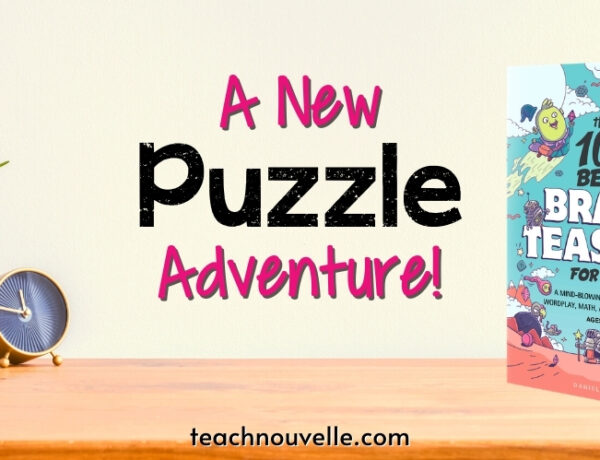Are you teaching The Outsiders? Read this post for tips and projects to help students analyze literary themes.
The Outsiders by S.E. Hinton is a staple of many ELA curriculums. It has plenty of literary merit, but very little diversity. You can change that! Today I’ll share resources to help with teaching The Outsiders that work for distance, hybrid, or classroom learning.
In this post you’ll find resources to help students understand and analyze themes in The Outsiders. Plus ways to bring in some more, diverse voices. You can find many more ideas in our full Rethinking The Outsiders resource.
Resources for teaching The Outsiders with increased flexibility and inclusivity
Explore the theme of Self-Expression
In this TED Talk, Kaustav Dey, marketing lead for Tommy Hilfiger in India, delivers several interesting examples of people who used fashion to make a political statement or express a truth about themselves. Students can connect this to the Greasers and the Socs and find moments where Hinton describes their fashion choices.
Want more TED Talks you can use in the classroom?
Student-Centered Research: Hair & Identity
Hair (and who cuts it and when) is integral to cultural expression across the world. In The Outsiders, Ponyboy’s hair is a big part of how he fits into his group. When the Socs threaten him, they threaten to cut his hair. Have students explore ways in which hair is important to different cultures and reflect upon the role that hair plays into their own self-expression. One way to do this would be for students to start with themselves and their “in group”/culture first and then research one other culture. You could then have students share what they discovered in brief presentations. To avoid overgeneralization, it’s helpful to steer students to grounding their research in one person’s testimony or experience.
Here are some videos and topics students could explore:
Former Olympian cuts off her hair and wins her identity.
How Black hair defines identity.
Referee cuts off Wrestler’s dreadlocks.
The Cultural Importance of Native Hair.
Analyze gold as a metaphor
This will probably be a familiar metaphor to students, but you can still bring in more examples. I enjoy using a classic example (Nothing Gold Can Stay by Robert Frost) contrasted with a modern one (“We Are Golden” by Mika). Ask students to compare these two texts and ponder some guiding questions. Does gold symbolize the same thing in both examples? The two texts have distinct tones, one is optimistic, the other is pessimistic, why? What does “being golden” mean to them?
A Japanese tradition of ceramic repair known as Kintsugi (Kin = “Golden”; Tsugi = “Joinery”) provides a clear metaphor for new beginnings. With Kintsugi, one repairs broken pottery with respect and grace. You glue together pieces with a lacquer infused with expensive gold powder. This draws attention to – rather than from – the fault lines throughout. If your students are feeling artistic – or if you’re looking to do some cross-curricular teaching – check out this lesson plan on making Kintsugi eggshells.
Explore the theme of answering violence with violence
After George Floyd’s killing, protests and demonstrations against police brutality happened around the world. These protests for racial justice, though not new, might the first in your middle schoolers’ memory. When we talk about answering violence with violence in the context of The Outsiders, students may bring up these protests, some of which turned violent. This segment from the NPR program Here & Now on violence as a form of protest can give students the much needed context to understand what’s happening around them. When discussing racial justice, historian/author Kellie Carter Jackson says it’s important to remember that violence has long been a tool of both outrage and change.
Dr. Martin Luther King, Jr. said that “A riot is the language of the unheard.” He expanded on that sentiment in this short (4:30) interview with 60 Minutes. I think it would be valuable for students to see that clip, as Dr. King’s words are so often “toned down,” “de-radicalized,” or taken out of context. Many consider this to be a “white-washing” of his legacy. It will be a great service to your students if you give them the full, accurate picture of Dr. King.
Final Thoughts
I hope this gave you some helpful resources for teaching The Outsiders with greater relevancy and representation! Many teachers have been working toward diversifying their curriculum. I’ve been working with Dr. Sheila Frye (from Teaching Literacy) on a project called “Rethinking the Classics” to help teachers find supplemental texts and curriculum updates. So far, we have covered The Outsiders, The Odyssey, The Great Gatsby, Romeo & Juliet, The Giver, To Kill a Mockingbird, Shakespeare (for any play), and we have more to come.
Do you need help to diversify a core text of your curriculum that’s not included in our Rethinking the Classics series? Reach out to me @nouvelle_ela and I’ll see if I can help 🙂
Happy teaching!







No Comments